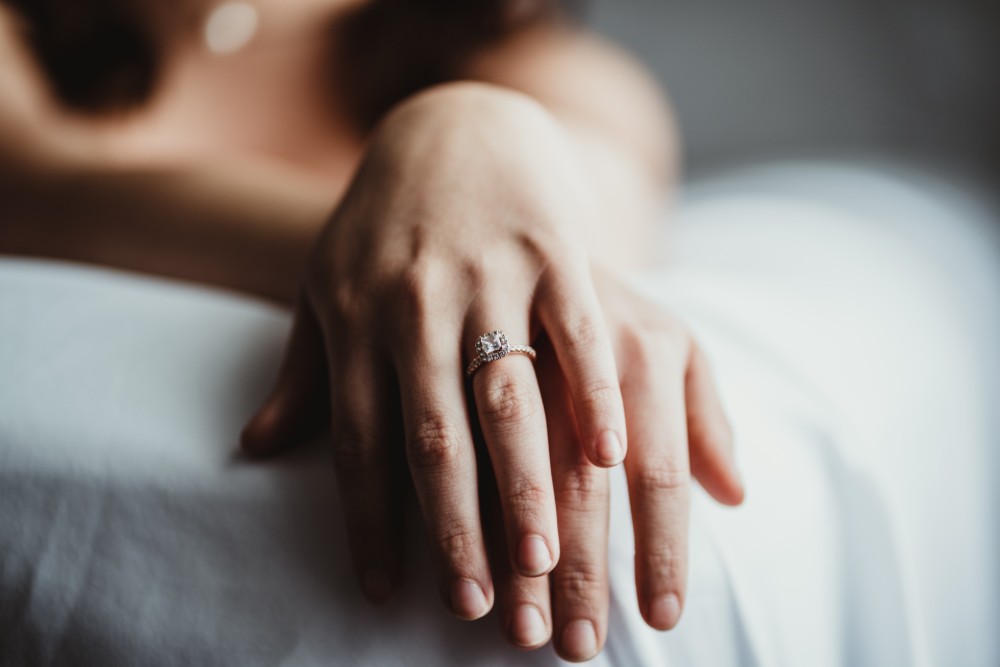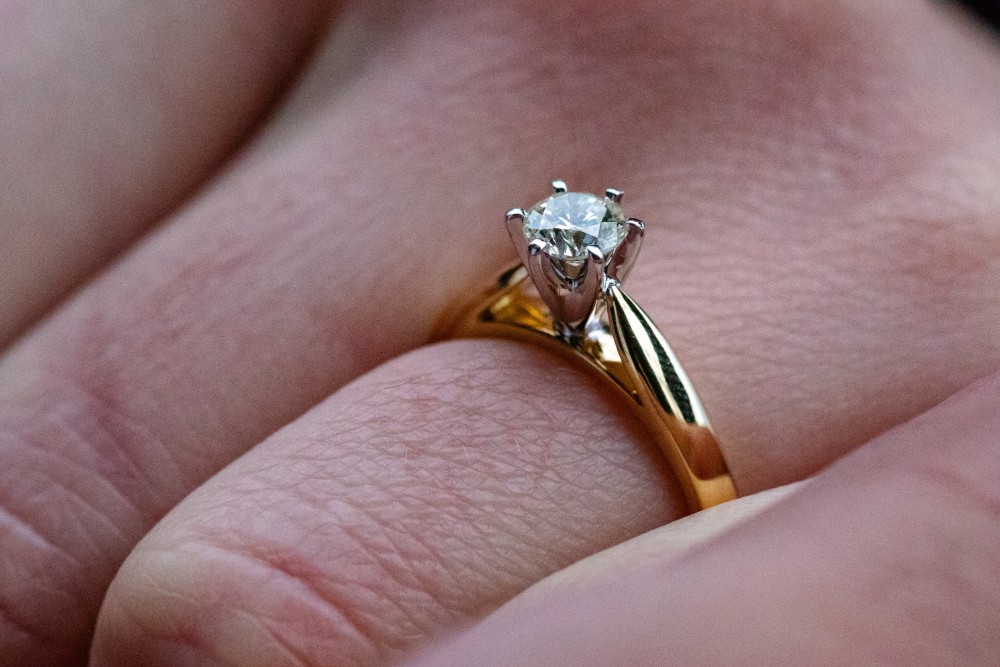The Anatomy of an Engagement Ring: 6 Parts Every Groom-to-Be Should Know
October 3rd, 2019

If you’re shopping for an engagement ring, then the odds are good you’ve been planning to propose for some time. While you’re surely excited about spending forever with that special someone, there’s a part of the process that might have you feeling apprehensive: Choosing an engagement ring.
After all, you’re looking for a beautiful, eye-catching diamond ring that reflects your loved one’s aesthetic sensibilities while adhering to any budgetary restrictions you might have. Moreover, the vocabulary associated with the parts of an engagement ring can be confusing to first-time buyers. Before visiting your local jeweler, check out these tips on understanding engagement ring terminology and selecting the ideal ring for your big day.
What Are the Parts of an Engagement Ring’
Whether you’re planning to custom design a ring for your sweetheart or choose one from the wide range of high-end designers available, it pays to do your homework. Below are the main parts of an engagement ring along with some features that may or may not be included in the ring you select.
The Shank
The shank is the band that circles around the wearer’s finger. Often engraved or inset with accent stones, the shank may feature a straight, tapered, or knife-edge design. Additionally, some shanks contain a single straight piece of metal, while others are split to resemble two separate pieces.
The Shoulders
The shoulders are the part of the engagement ring that curves up from the shank to support the center stone. There are many different styles of engagement ring shoulders, and each one lends a different feel to the overall look of the design.

The Setting and Mounting
Although often used interchangeably, the words setting and mounting have different meanings. While the mounting describes only the metal ring parts, the setting includes both metal elements and side stones (but not the center stone). In many cases, engagement ring buyers can opt to purchase the setting and the center stone separately.
The Center Stone
For most buyers, a center stone is what makes an engagement ring stand out from other ring varieties. Eye-catching and attractive, the center stone gives the ring its classic matrimonial appearance. While there are numerous engagement rings on the market, solitaires are among the most common and enduring options. For example, renowned designer Simon G. offers a wide assortment or solitaire rings in collections like Modern, Passion, and Delicate Enchantment.
The Side Stones
Flanking the main stone, side stones add sparkle and flair to your ring and are a great way of personalizing this important purchase. Along with diamonds, you may choose to accent your ring with emeralds, sapphires, rubies, or another precious stone boasting special significance for you and your intended.
The Prongs
Prongs play a crucial role in ring design by helping to hold the center diamond in place. While most engagement rings feature four prongs, some have as many as six or eight. Prong styles vary significantly and range from tulip to v, double, and straight options.
Find a Ring to Make Her Swoon at Huntington Fine Jewelers
Family owned and operated, the team at Huntington Fine Jewelers is passionate about bringing customers the finest-quality diamond rings from top-designers like Simon G. and Tacori. We love seeing the smiles on visitors’ faces when they find that perfect engagement ring. Additionally, our team specializes in repairing jewelry, so you can feel confident that we’ll do whatever it takes to protect your investment. To learn more about our services, call today or shop our exceptional selection online!